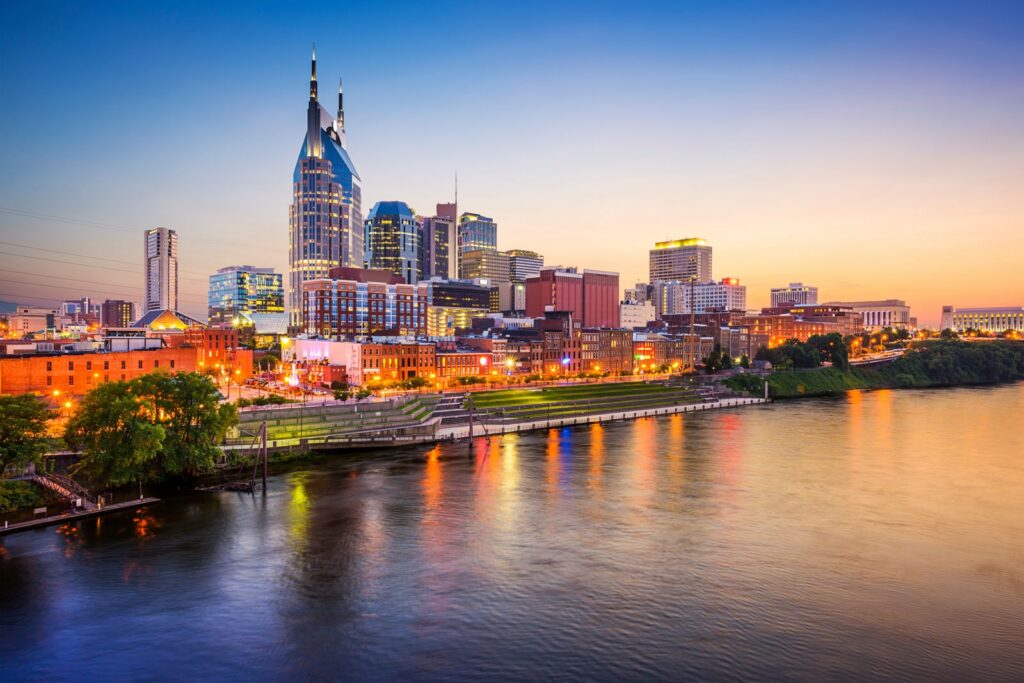With fifty different states to chose from, it is difficult to know where to start when you think about relocating to the USA. North, east, south, or west, every state has something wonderful to offer, should you choose to accept it. How about the midwest? How about Nebraska?
Nebraska is a state that lies in both the Great Plains and the Midwestern United States. It is bordered by South Dakota to the north, Iowa to the east, and Missouri to the southeast, both across the Missouri River, Kansas to the south, Colorado to the southwest, and Wyoming to the west. Its state capital is Lincoln, and its largest city is Omaha, which is on the Missouri River.
Home to 1.9million people, Nebraska is sandwiched between South Dakota and Kansas from north to south; with Wyoming and Colorado to the west, Iowa, and Missouri to the east. This very neighbourly state is transected by Route 80, connecting you to the rest of the country. From ranches to urban destinations to unusual roadside attractions, Nebraska has something that will delight everyone. Nicknamed the Cornhusker State, Nebraska has a lot to offer.
The Nebraska landscape holds some fascinating attractions for those who take the time to explore it, from Chimney Rock to the beautiful scenery of the Sandhills. Lincoln, the state capitol, and Omaha are the two main population centers. The bluffs along the Missouri River in northeastern Nebraska offer natural beauty with miles of densely wooded areas and pristine waterfalls, while central Nebraska’s tallgrass prairies and scattered woodlands preserve the state’s homesteading heritage.
If you’re moving to Nebraska, there are a lot of things you’re going to need to know. Luckily, you’ve come to the right place.
Here are a few pros and cons to consider as you make your move to The Cornhusker State:
The Nebraska economy is in transition. It is characterized more and more as a service economy (transportation and public utilities; trade; finance, insurance, and real estate; services; and government sectors) and less and less as goods-producing economy (agriculture, construction, and manufacturing).
Agriculture is the #1 industry in Nebraska and cattle production represents the largest segment of the industry. It’s the engine that powers the state’s economy with over $6.5 billion in cattle sales each year. In short, the beef cattle industry has an unmistakable impact on almost everyone in Nebraska.
Nebraska has one of the lowest unemployment rates in the United States, fluctuating around 3%. It is one of the top 20 states for job hunting, taking into account economic standing and job opportunities. The companies with the largest workforce include Home Instead Senior Care, Berkshire Hathaway, and Union Pacific – the last two have their headquarters in Omaha.
Nebraska has less employment in travel and tourism than the nation and is not focused on the motor vehicle or oil production. Nebraska also has a larger share of employment in the essential industries of food production and processing, and industries such as finance and insurance, where there is more potential to work from home.
Due to the rural nature of Nebraska, you will definitely want to rent a car if you hope to do any kind of exploration outside the cities. There is virtually no public transportation to help you get between the towns and without a car you will pretty much be stuck in one place. Even within a city like Omaha or Lincoln, a car will easily pay for itself in terms of convenience and taxi fares since the city bus network caters to the locals rather than the tourists. Fortunately, it’s no problem finding a rental car from most major American outfits at the airport or in downtown Omaha or Lincoln.
If you need a taxi, you’ll only find them in the largest cities like Omaha and Lincoln. They are a good value considering no destination within Omaha takes more than a few minutes to reach.
The train is only useful to get into Nebraska from destinations to the east and west. The Amtrak’s popular California Zephyr line runs right through the middle of the state every day on its way from San Francisco to Chicago. Only Omaha and Lincoln have city bus systems. Lincoln’s StarTran covers a number of main points around the capital, while Omaha’s Metro Area Transit is useful for getting between the zoo and downtown.
The cost of living in Nebraska is almost 22% lower than the average US price. This is due to the abundance of land and low population density. Also, the crops and meat are produced locally, so there’s no need for transportation costs.
A lot of people, keep raving about how easy on the pocket it is to live in Omaha. Something as simple as groceries is priced 6% below the country’s average. To delve deeper into this, a carton of eggs will only cost around $1.71, with a gallon of milk being just about $1.83.
The median household income for Omaha residents is $63.062, which is higher than the US average of $59,039. According to the family budget calculator, a family of four would need to earn $7,219 a month or $86,633 annually to live comfortably in the city. These figures show that a family of four needs to be a two-income household.
Moving is one of the most exciting and overwhelming events in our lives. While there are many moving companies and various different resources to choose from, there is only one Real Movers. If you are in the process of planning a long-distance move, and you are looking for a moving company you can trust, Real Movers is your perfect choice.















